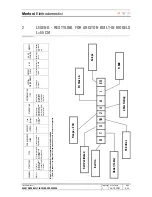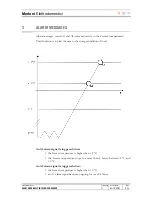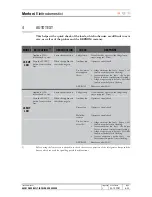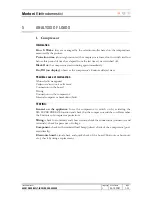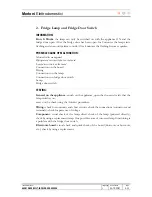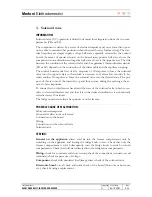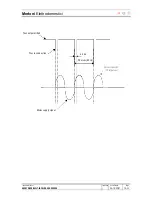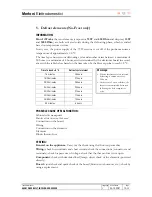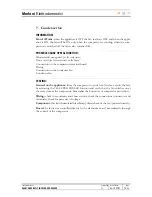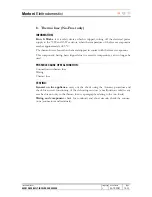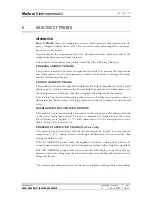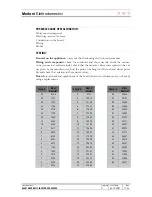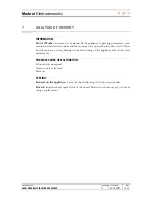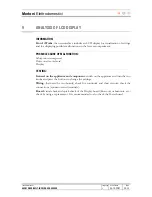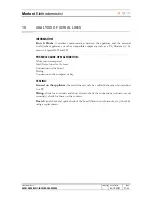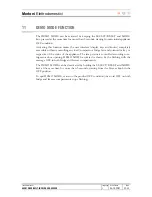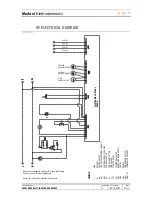
Merloni Elettrodomestici
55 CM WIDE BUILT-IN FRIDGE-FREEZERS
Technical Manual
I
04-10-22/01
9-33
Language
Issue/Edition
Page
3. Solenoid valve
INFORMATION:
Solenoid valve (EV) operation is linked to demand for refrigeration from the two com-
partments (FR and FZ).
The component is driven by a series of electrical impulses and, once forced into posi-
tion, is able to maintain that position without the need for any further energy. The elec-
trical impulses are simply supply voltage half-waves specially selected by the control
board: (by means of special circuitry on the board: triac) positive half-waves force the
component in one direction and negative half-waves force it the opposite way. The link
between the condition of the solenoid valve and the appliance's thermodynamic circuits
(FR or FZ) depends on the connection of the driver cable and the capillary coupling.
The control board sends first of all a sequence of 10 impulses to force the solenoid
valve into the opposite state to that which is necessary and, after a few seconds (2-3s),
sends another 10 impulses to force the solenoid valve into the desired state. The pur-
pose of this is to move the internal stop and thus ensure, during the exchange, the re-
moval of any impurities.
To ensure that no interference has altered the state of the solenoid valve (which is sen-
sitive to electrical interference) and that it is in the desired condition, it is automatically
refreshed every 15 minutes.
The fridge nonetheless always has priority over the freezer.
POSSIBLE CAUSE OF MALFUNCTION:
Microprocessor management
Solenoid valve driver circuit on the board
Connection on the board
Wiring
Connections on the solenoid valve
Solenoid valve
TESTING:
General on the appliance
: direct cold air into the freezer compartment only by
switching on the appliance and turning the fridge knob to zero. Check that only the
freezer compartment is cold. Subsequently, turn the fridge knob to switch on both
compartments. Check that cold air is directed into the refrigerator compartment.
Wiring
: check for continuity and short circuits; check the connections (connectors and
terminals); check for presence of voltage.
Component
: check with simulated load (lamp); direct check of the solenoid valve.
Electronic board
: visual check and quick check of the board (blowouts or burnouts,
etc.); check by using a replacement.




